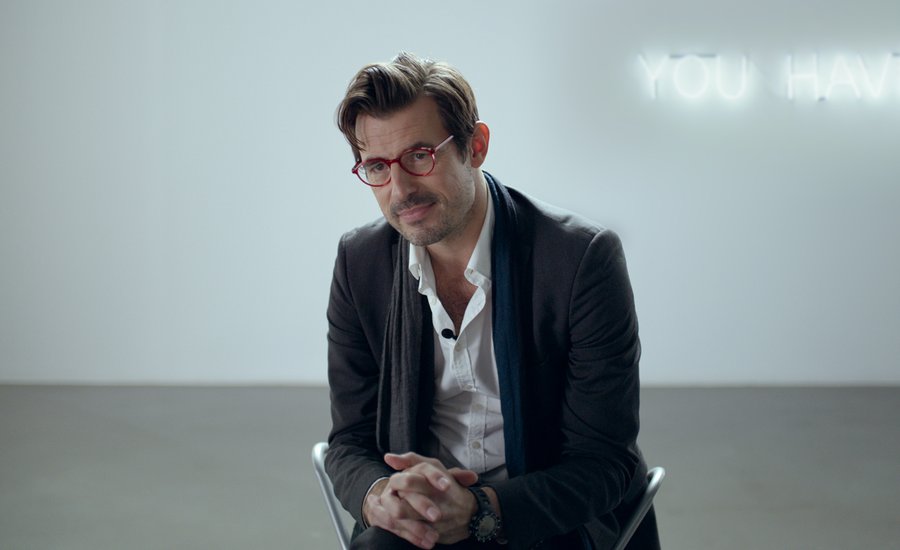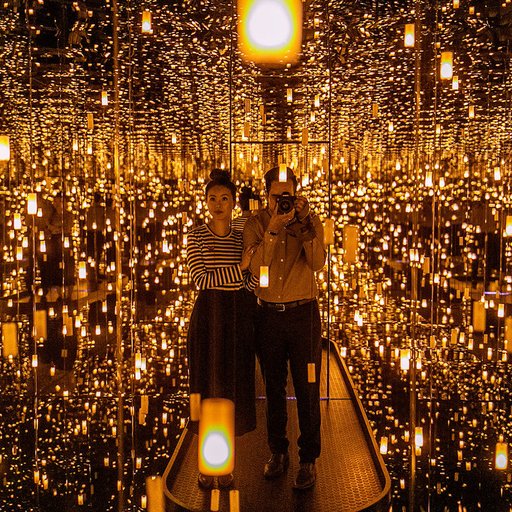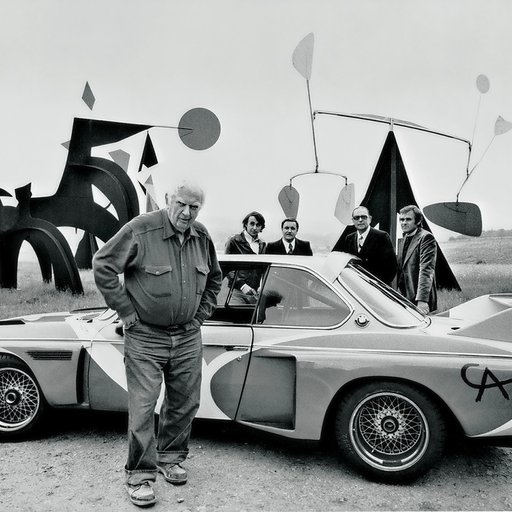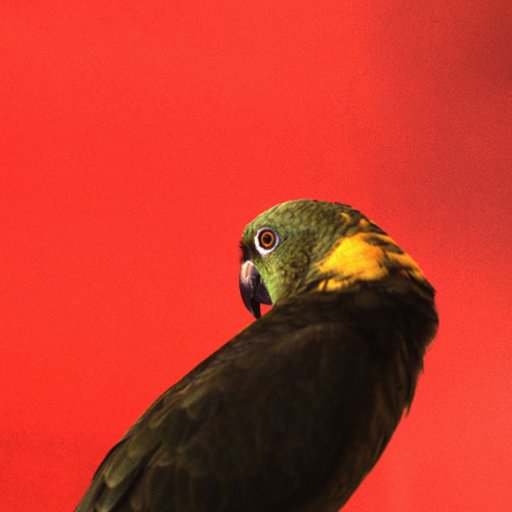Swedish director Ruben Östlund (most known for his film
Force Majeure
)
is quickly becoming an icon of contemporary cinema with his quiet, hyper-realistic, subtly hilarious but uncomfortably awkward films. His newest film
The Square
, this year's winner of the Palme d'Or Award at Cannes,
takes a stab at the contemporary art world, and its portrayal cuts deep.
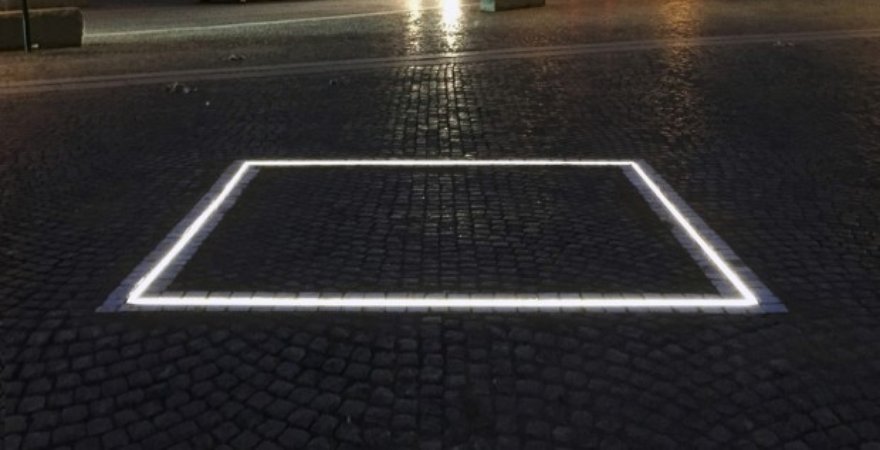 Image courtesy of IndieWire
Image courtesy of IndieWire
The contemporary art world is rife for satirical commentary, and not solely from the folks who walk around museums saying, "I don't get it, my dumb grandson could do that." Admit it: the culture surrounding "high art" can be pretty absurd with its glitz, glamor, and excessive, complicated use of SAT-level vocabulary. But for Östlund, the obvious comedy of contemporary art culture makes it that much more difficult to satirize, and consequently The Square doesn't take the easy route by simply slapping you in the face with jokes that make you say "oh my god, that is so true!" While there are certainly striking comedic moments that will resonate with anyone who has ever been to a gallery before, the film's comedic brilliance lies in the nuances. Much like a Beethoven symphony, it shifts tempos, volumes, and moods rapidly and with great precision. Often it is the softest moments that hold the most weight.
In an interview at Cannes, Östlund states that the ideal balance he strives for in his works is a "combination of sociology, stand-up comedy, and horrifying awkward moments." Östlund's characters are tragically human, composed on the surface but unraveling at the seams. Says Östlund, "I'm interested in creating dilemmas for the characters in my films... situations where there are two or more opportunities and none of them are easy." His hyperawareness of the discomfort of human relations and sense of wit makes for a film much like looking in a high-definition funhouse mirror; inciting the viewer to look critically at themselves and their place in society, while also elucidating the inane absurdity of the society itself.
The Square depicts a hyper-capitalist society brimming with intellectual snobbery. Claes Bang plays Christian, a handsome, smug, self-assured curator at a Stockholm Contemporary Art Museum called X-Royal. Things seem to be going just fine for the red-spectacled, fitted-suit wearing Christian until he is robbed of his phone and wallet in a disorienting exchange on the street outside of the museum. His preoccupation with the lost property sends him spiraling through a series of hilarious mishaps as he attempts to get revenge. Ultimately, we witness Christian's baffling inability to abide by the moral ideals printed on the placards alongside the works at X-Royal.
Through a series of poignant vignettes, The Square demonstrates that sometimes absurdity is the most apt way of depicting reality. We highlighted eight moments that Östlund hit the nail square on the head of the contemporary art world (whether we'd like to admit it or not).
Spoiler alert (kind of): We'll be giving away some plot points below—but we're not convinced they'll spoil the watching experience if you haven't seen it yet. Östlund's films are more based on mood than plot—generally, not a whole lot happens.
---
 Image courtesy of IMDb
Image courtesy of IMDb
The Interview
While interviewing curatorial director Christian (Bang), Anne (Elizabeth Moss) quotes something she read on the museum's website, inquiring whether he might explain it to her. After assuring Christian that she is evidently not as scholarly as he is, she reads " Exhibition: Non-Exhibition, an evening conversation that explores that dynamics of the 'exhibitable,' and the construction of publicness in the spirit of Robert Smithson 's Site/Non-Site. From non-site to site, from non-exhibition to exhibition, what is the topos of Exhibition: Non-Exhibition in the moments of 'mega exhibition?'" Christian redirects the question, effectually confusing Anne, who contorts her face as though contemplating some profound statement, though any such insights have yet to be made.
 Image Courtesy of Cannes Film Festival
Image Courtesy of Cannes Film Festival
The Accidental Disposal of the Works
The show currently on view at X-Royal is titled "Mirrors & Piles of Gravel," a fitting name for an installation that features mirrors and piles of gravel. In one scene, we watch a man attempting to clean the exhibit, having difficulty navigating a zamboni-type vacuum around the piles. It soon becomes apparent that the cleaner has accidentally vacuumed up a sizable amount of the piece. The curators are frantic and distraught until Christian suggests they simply get more gravel and pour it onto the piles. It is a hilarious poke at the classic question of the value of contemporary art, namely "if you place an object in a museum... would that make it art?" (a recurring theme in Christian's interview responses, particularly when he is faced with questions he doesn't quite know how to answer). The scene brings to mind the 2015 "Where Shall we go Dancing Tonight?" debacle, which, in case you don't remember, involved the accidental disposal of an Italian art installation consisting of 300 empty champagne bottles and confetti which cleaners mistook for the aftermath of a wild opening party. All I can think is how much of a bitch that must have been to clean up.
"The Square": Morality in Theory vs. in Action
X-Royal is preparing to introduce a new exhibition featuring the work of fictional Argentinian artist and sociologist Lola Arias. The central piece of the exhibit is an illuminated square cut into cobblestone which reads “the Square is a sanctuary of trust and caring. Within it we all share equal rights and obligations.” Outside of the museum, homeless beggars line the streets and are consistently ignored. In one instance, Christian is at the mall with his daughters. A homeless man is bowed at the foot of a tile square at the entrance, and is disregarded by passerbys, including our protagonist. Christian receives a text and has to leave urgently. He looks around, frantically asking people to help him and watch his daughters for a moment, but everyone pretends not to hear him; everyone but the homeless man by the square, who agrees to sit with Christian's shopping bags and wait for his daughters to return. The irony of the exchange, as paralleled to Arias' piece, is jarring, and resonates deeply with the current social divide between those who have bountiful resources, and those who don't, and how often the latter is utilized to make an artistic statement.
 Image courtesy of AlloCine
Image courtesy of AlloCine
The Quest For Justice vs. Power Dynamics
Art, like many things, is, and has long been dominated by powerful, affluent, white, cis males. It's slowly becoming more inclusive, as galleries are showing more works by more marginalized people than ever before. But Östlund doesn't miss the opportunity to poke fun at the power dynamics present in elitist society. When Christian loses his wallet and phone, he gets his young employees to handle it for him (he has more important things to do). One of his employees kindly offers to help Christian get his belongings back, and the two go on an adventure of sorts, giggling like two kids pretending to be on a secret mission. The younger man sits in the backseat of the car, creating a strange power dynamic already, and once the expedition starts to tread dangerous territory, Christian is quick to throw his colleague under the bus, claiming something along the lines of, "I'm kind of a well-known figure, I can't be seen doing this deplorable act, you have to do it," i.e. "My life matters more than yours," due to his status as a curatorial director.
The Performance Artist
Throughout the film we see a floor to ceiling projection of a man staring at the audience, grunting and imitating an ape. The "monkey-man" is a performance artist named Oleg (after Russian artist
Oleg Kulik
), played by monkey impersonator Terry Notary, known for his work in
Dawn of the Planet of the Apes
. Östlund is a big YouTube fan, so he came upon what would become a groundbreaking scene of filmic genius by simply googling "monkey impersonator" and "American punk rocker GG Allin" videos. Östlund claims that he is fascinated by the anarchistic, no-rules attitude of the notorious Allin, whose performances often included defecating on himself and showering the audience with his bodily excretions. Oleg is invited to perform for guests, presumably exorbitantly wealthy donors, at a black-tie dinner event. The 12-minute long scene revels in the awkward, fearful silence of the audience pierced by the grunts of the unrestrained performer; and explores the boundaries of art, particularly the moment where performance crosses the line from high art to downright scary and inappropriate. Östlund contrasts animal instincts with societal conventions, looking at the ways that societal measures of success and security cause people to ignore others who are in need in the name of self-preservation. I'm not totally sure if anyone
really
knows what performance art is, but Östlund's fictional exhibition might just be the most thought-provoking performance work in recent history.
 Image courtesy of Magnolia Pictures
Image courtesy of Magnolia Pictures
The Viral YouTube Video
The administrative museum staff hires two cocky young media consultants to help the museum get some web traffic. In an incredibly futile board meeting about gaining likes and views, involving a hilarious misremembering of the Ice Bucket Challenge, the media consultants pitch the idea of creating a viral YouTube video to raise awareness about the upcoming show. If you haven't seen it I won't ruin it for you, because it is so great, but ultimately the video ends up being outrageously offensive, and certainly gets the museum some attention. The mishap is a spot-on example of the complications of navigating an art world heavily invested in the realm of social media.
 Image courtesy of Magnolia Pictures
Image courtesy of Magnolia Pictures
The One-Night Stand
Despite not having any particular interest in Anne (Moss) whatsoever, Christian has sex with her after an opening event, seemingly because the other women are more interested in looking at their phones than talking to him. Following their awkward night together, Anne confronts Christian at the museum, asking him "do you just go have sex with lots of other women?" Christian stares off in another direction, mumbling softly and scratching his ear. She asserts herself as more than a body to be penetrated, which he seems to tune out (sound familiar?). Periodically a massive chair sculpture in the background makes a noise that causes the two to pause their conversation until it settles, creating a gorgeously deafening discomfort. Anne asserts that she thinks that Christian was simply trying to conquer her and assert his power by having intercourse with her, to which he concedes. Again Östlund addresses power dynamics in relation to gender, and like the majority of things he addresses in the film, leaves the exchange inconclusive, simply noting things as they are.
 Image courtesy of HeyUGuys
Image courtesy of HeyUGuys
The Press Conference
The museum is involved in a major scandal following the release of the controversial YouTube video, and Christian is instructed to take the blame. At a press conference, reporters hurl questions at him, some asking how he could be so insensitive and offensive, and others inquiring aggressively why he won't stand up for what he's done, and attempt to dismantle the P.C. police who are hindering expression. This is a prevalent conversation in the contemporary art world and in contemporary society at large, as we all know from reading comments on anything posted on the internet. At what point does expression become compromised by societal moral standards? And at what point has expression crossed the line? Ultimately, no matter what you do, you can't please everyone (or anyone).
RELATED ARTICLES:
The Good, The Bad and the OMFG: Art's Complicated Relationship with Reality Television
What 'Gossip Girl' Got Right (And Wrong) About the Art World











